| Cylindrical anamorphic pictures projected around the chrome steel cup standing on the top of a table, showing its virtual surroundings. On the projection surface, these images are chaotic and incomprehensible. But when reflected on the surface of the mug, they form coherent moving images, representing the fictional lives and environments of the object. As the visitor drags the mug on the tabletop, the projected anamorphic image follows its movements, showing different views of its virtual environment, just like it would reflect its real surroundings. In the mirror of the mug's surface only a small portion of the environment is visible, thus the visitor has to drag it through the whole tabletop area to scan the total surroundings. In other words the mug serves as the interface, and the image-restoring device at the same time. | |
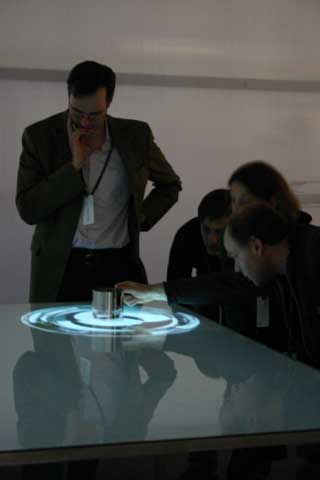
|
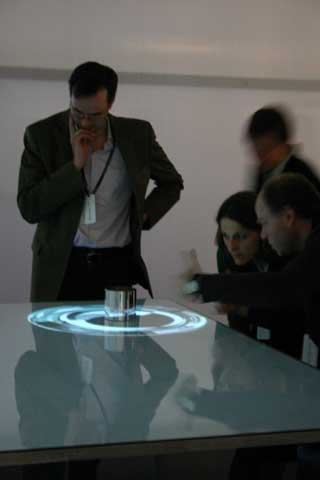
|
|
The first version of the installation "Aura" has been realized in 2003 for an exhibition with the same title, providing
a survey on the current state of art employing digital technologies, and on the nature of the changes brought
on since the end of the classical age of technical reproduction by digital information and communication.
The concept of the aura was defined by Walter Benjamin as: "the unique phenomenon of a distance, however close it may be." This formulation continues to inspire, and to stimulate interpretation, because it calls our attention to the clear difference between works created through classical media on the one hand, and technical media on the other: while the former always exists somewhere as an original, works created through new media can have multiple identical versions; they have no original in the traditional sense. In the digital age, this situation has changed once again. Since concepts of time and space are different, so is the notion of the aura. | |
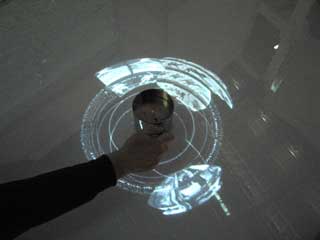
|
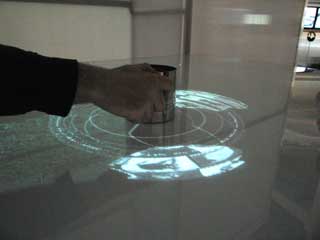
|
|
Anamorphosis has a big tradition in the fine arts. Various methods of manually creating anamorphic images has
been developed during the centuries, sometimes with the aim of creating "secret images" to hide forbidden content.
In the age of photography and film the technical/mechanical process of producing anamorphic images
became much simpler. The medium of anamorphic imagery became one of the popular optical toys, showing glistering
and fashionable optical illusions. But still, in terms of "catoptric" anamorphosis - where the picture is
restored to its coherent form by a distorting mirror - the photographically produced image assumes the moment,
when the physical scene and the mirroring object exist together for the time of the exposure.
In the installation "Aura", where visitors can explore fictional environments of an object, we make use of the fact, that this "photographic coexistence" of mirror and mirrored is not required any more in digital imaging. |
|
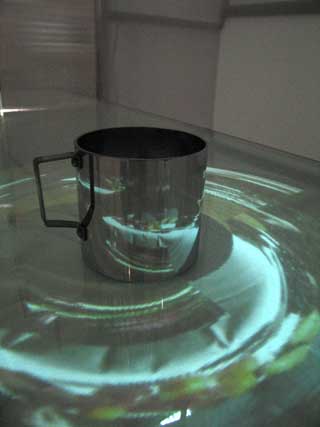
|
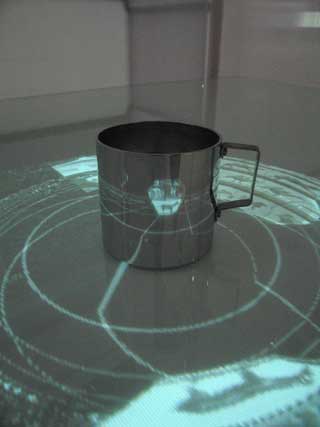
|
|
Technically speaking the illusion is produced by moving a camera and the "negative" of the mug (practically a
cone with corresponding dimensions) together in a virtual space, where the reflected objects are placed around
them. The image shown in the conical mirror is projected around the real object, which as the corresponding
pair of the virtual cone, the picture on its reflecting surface is turned back into a coherent image.
| |